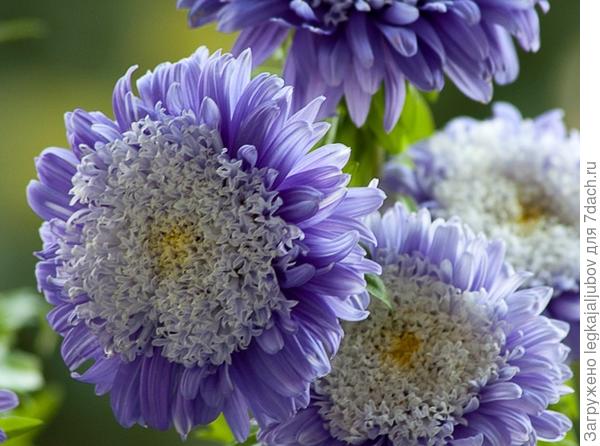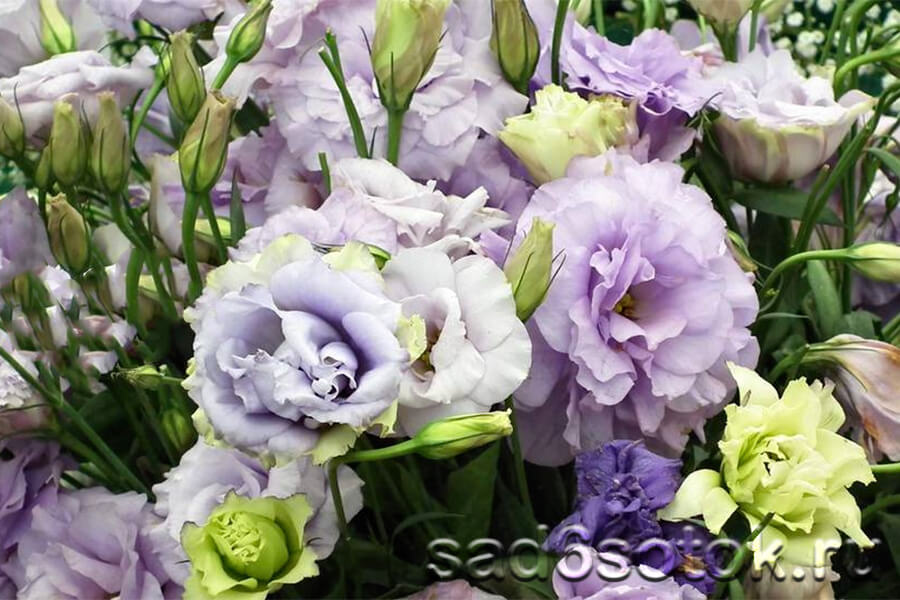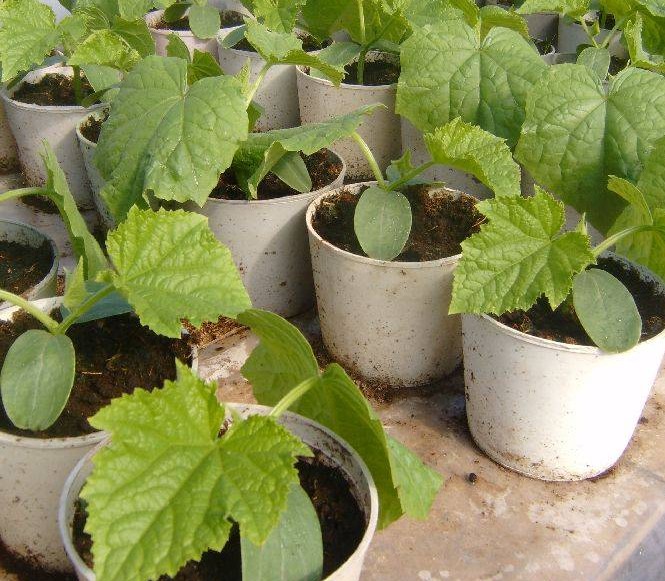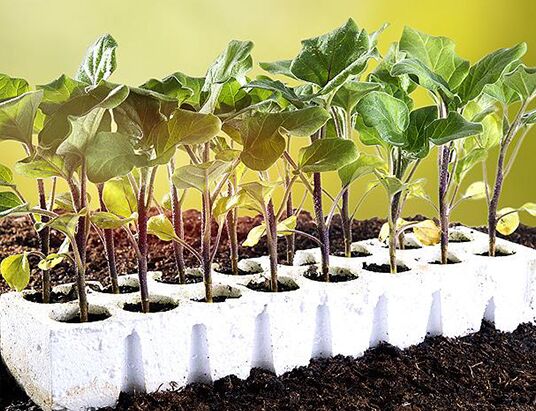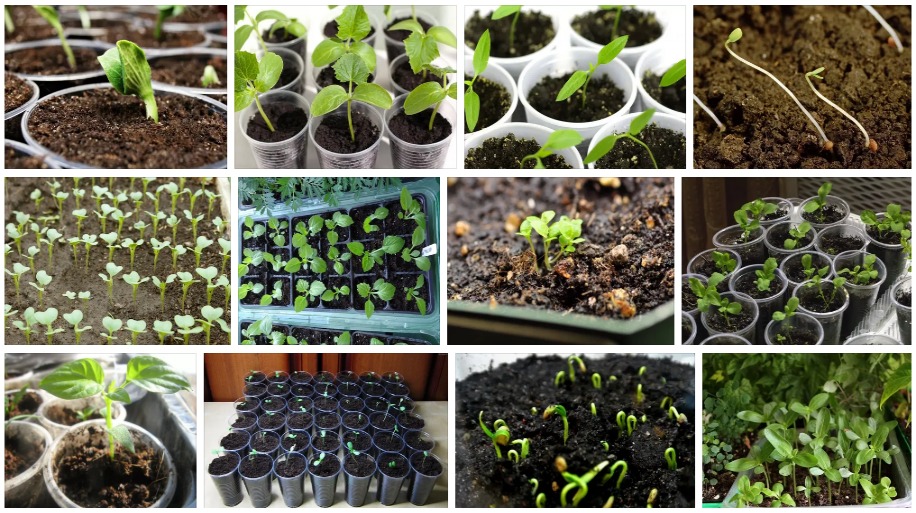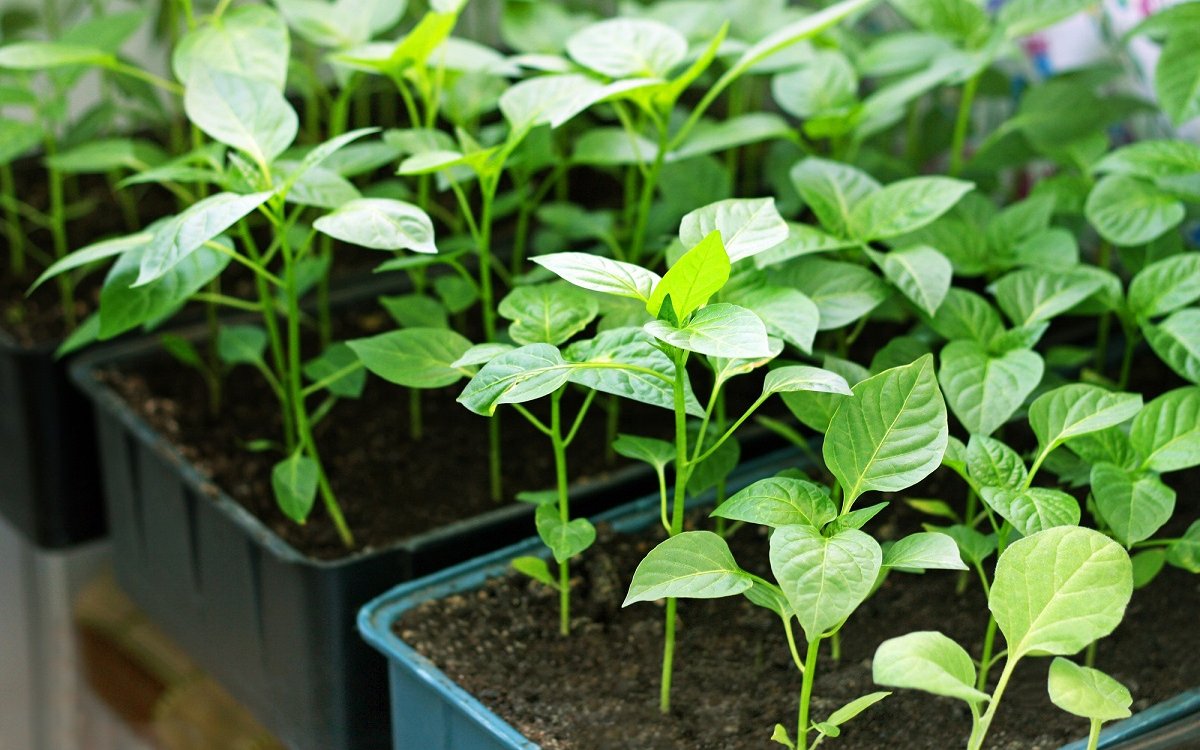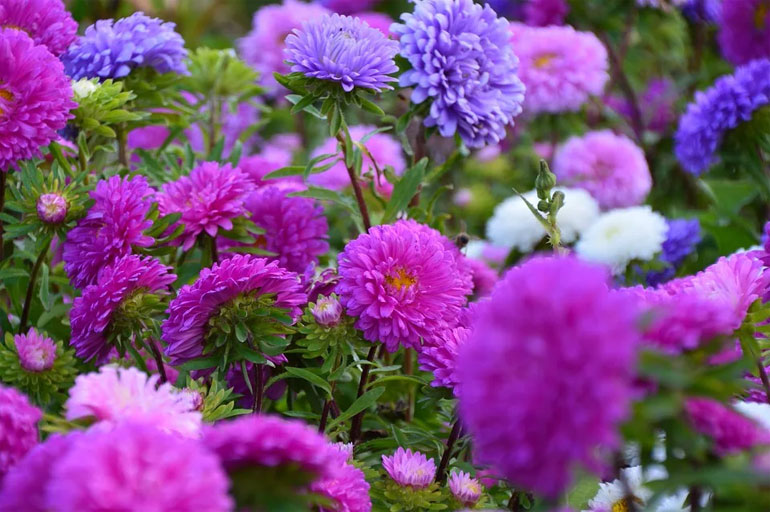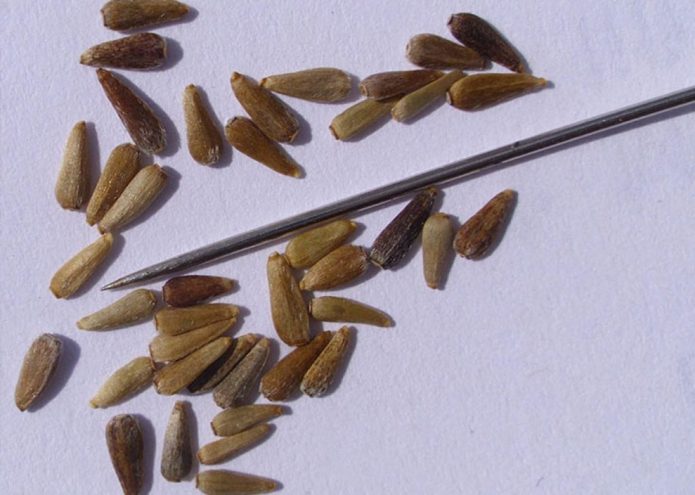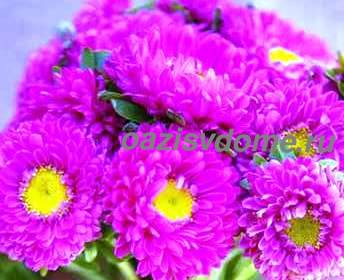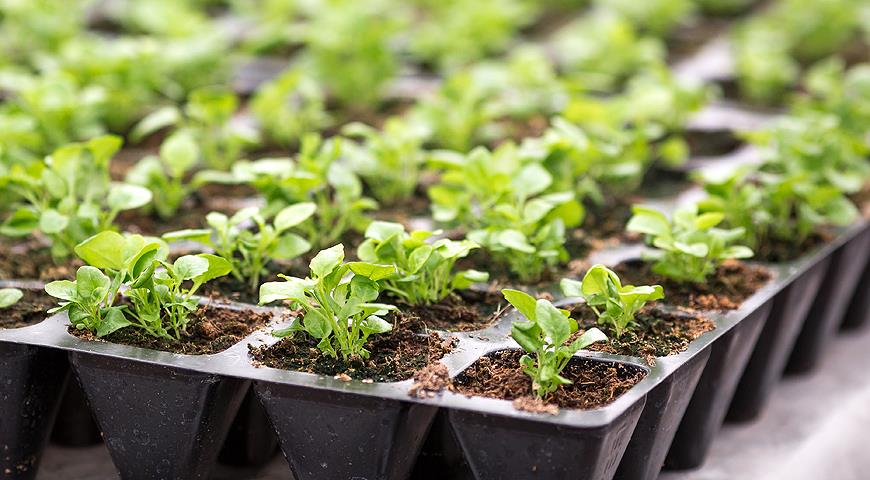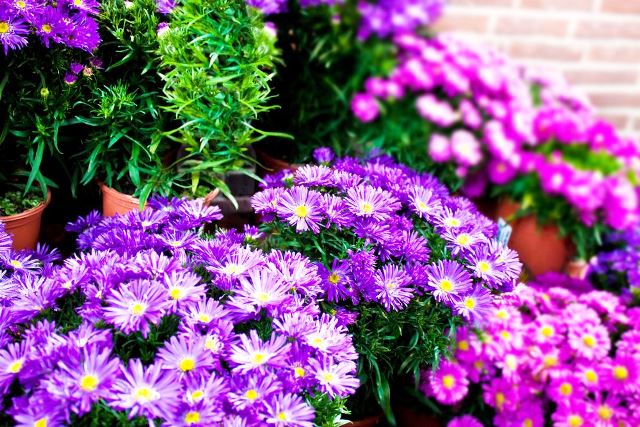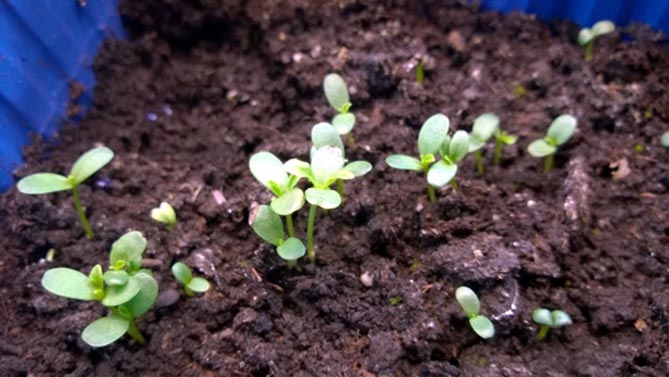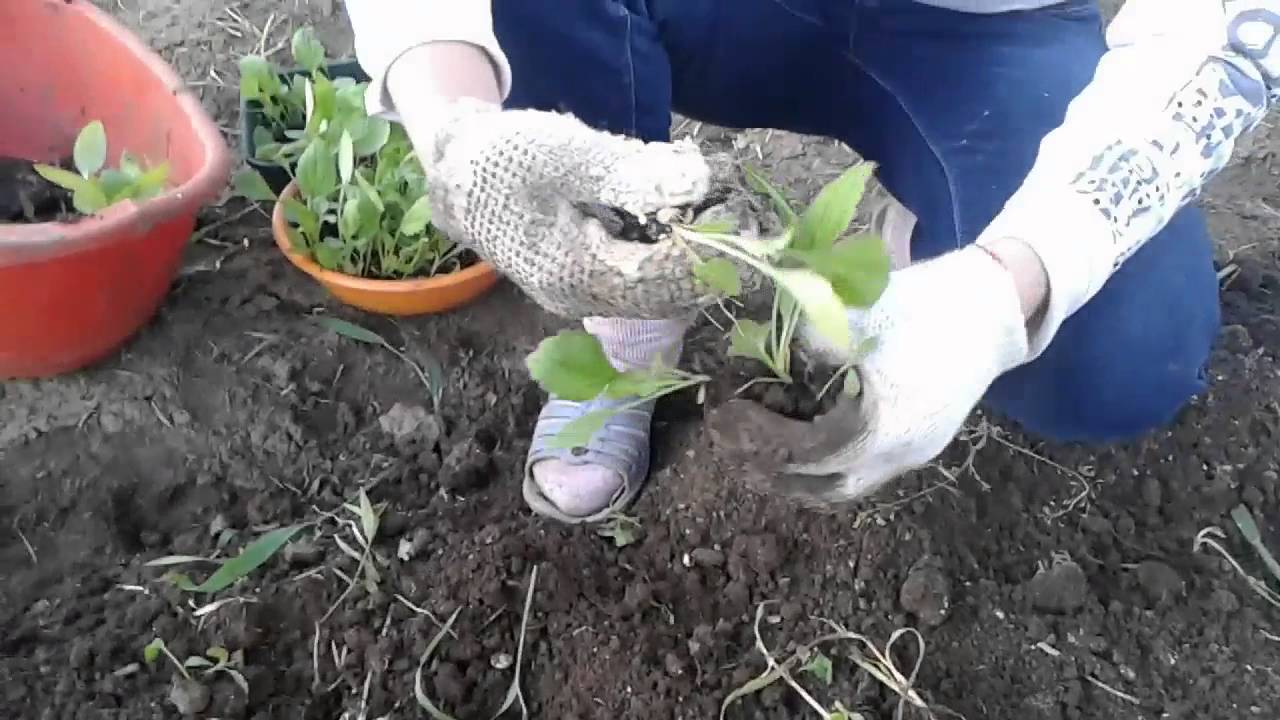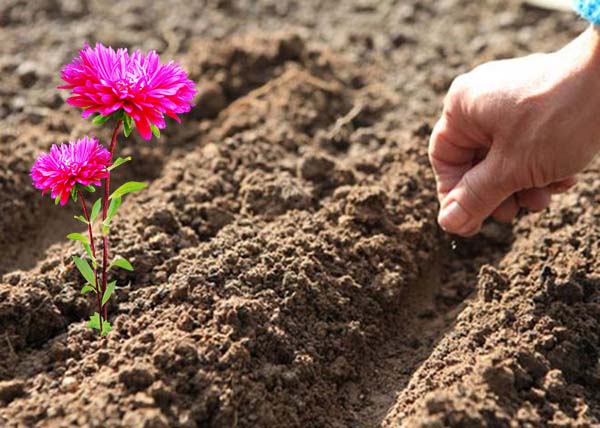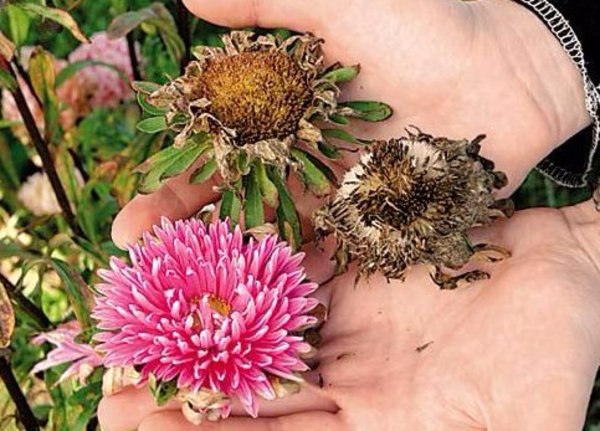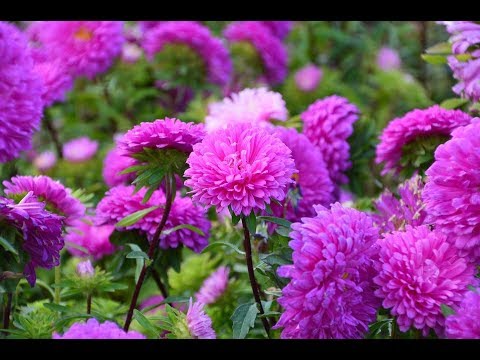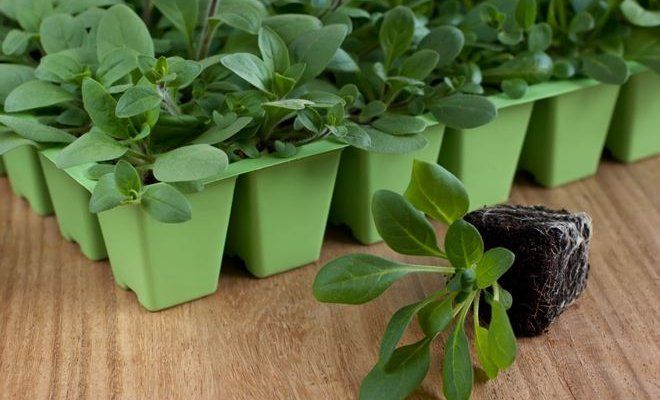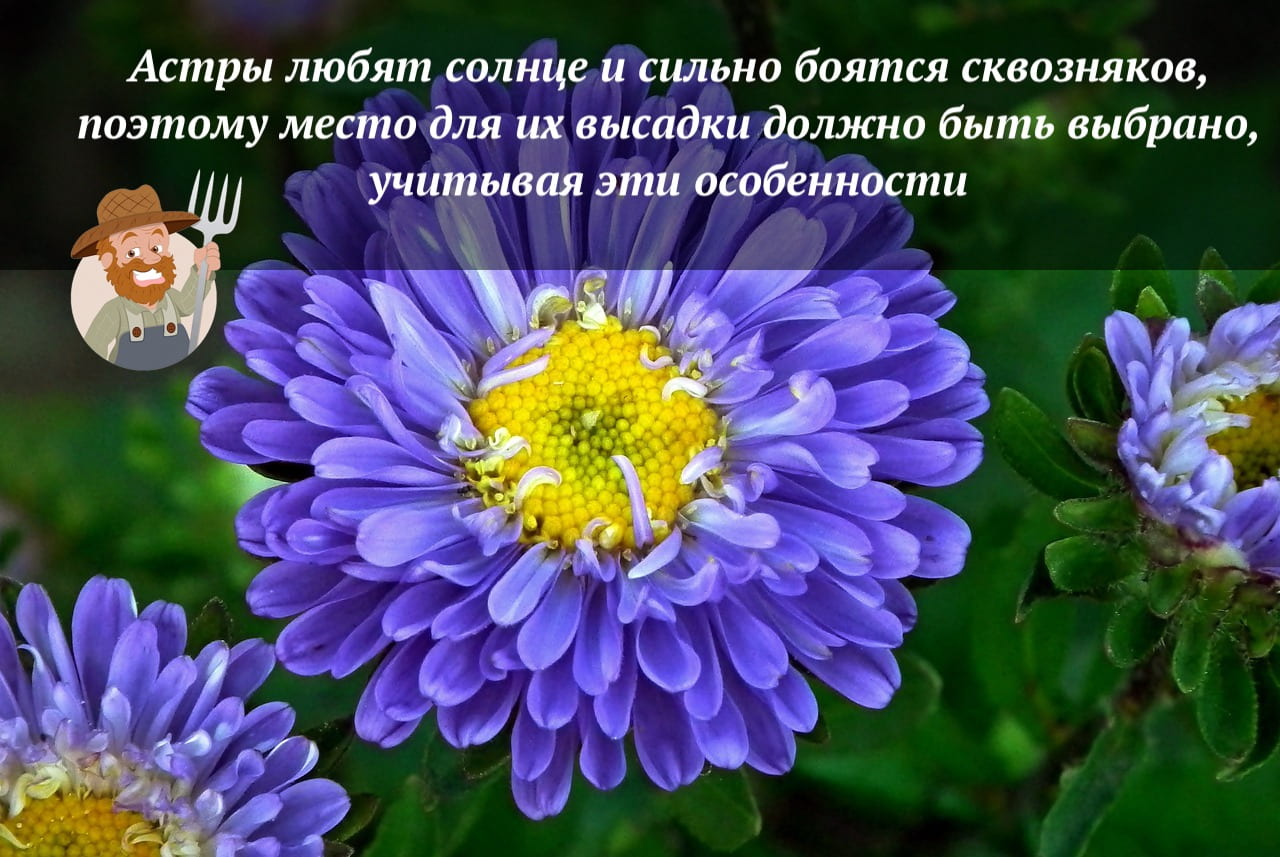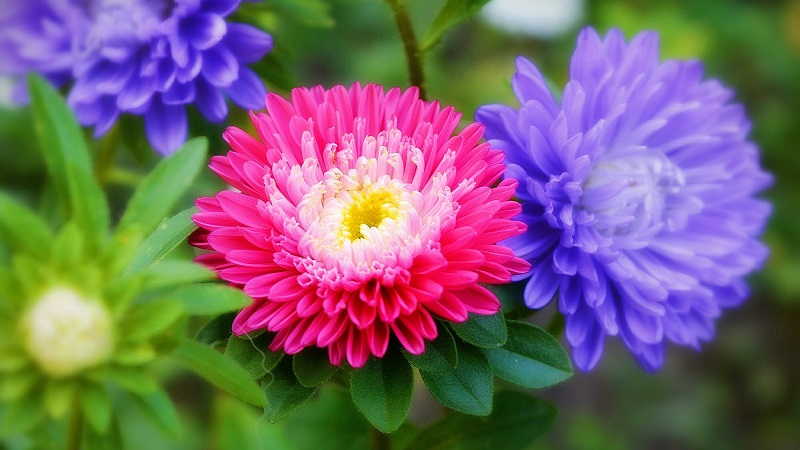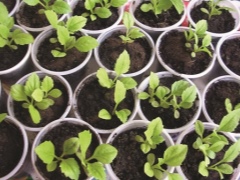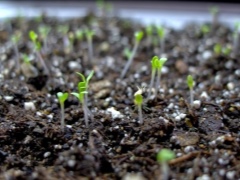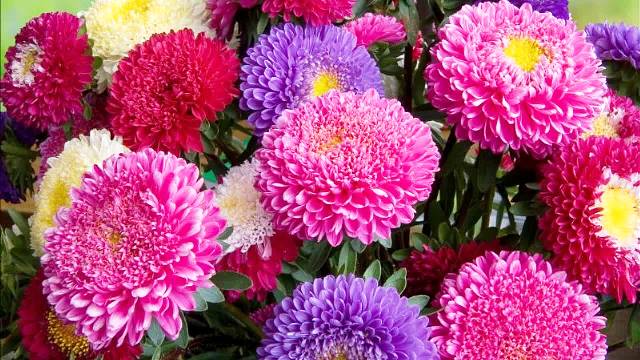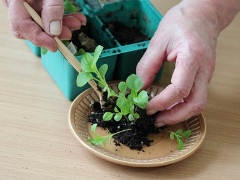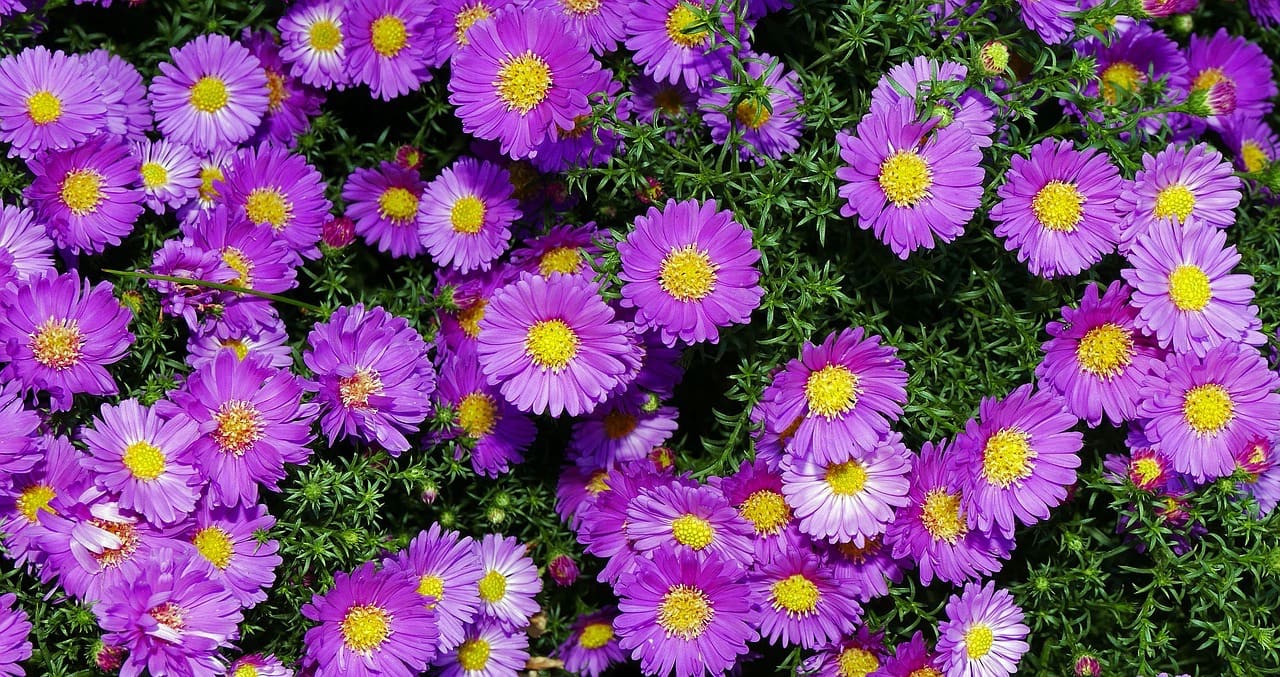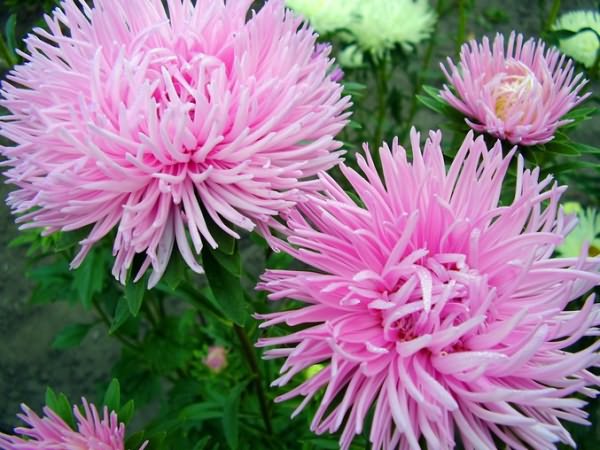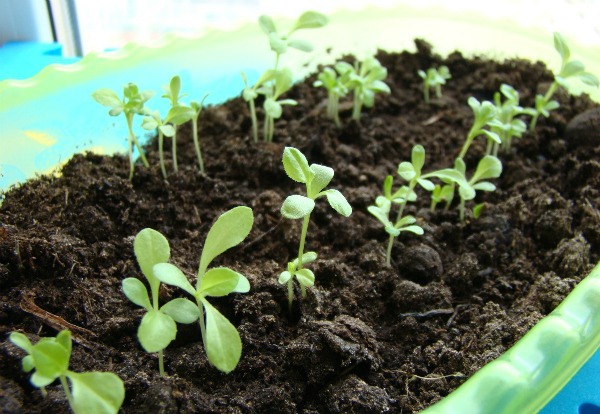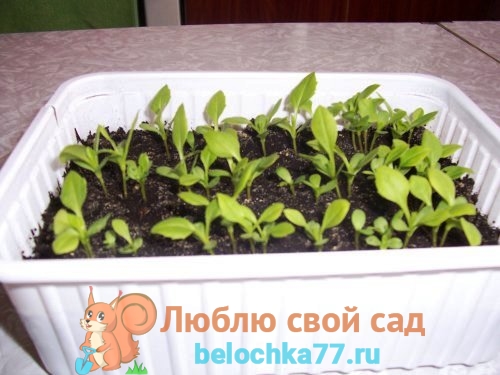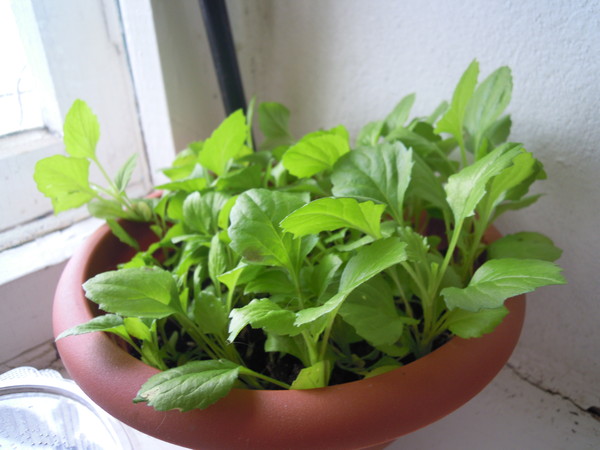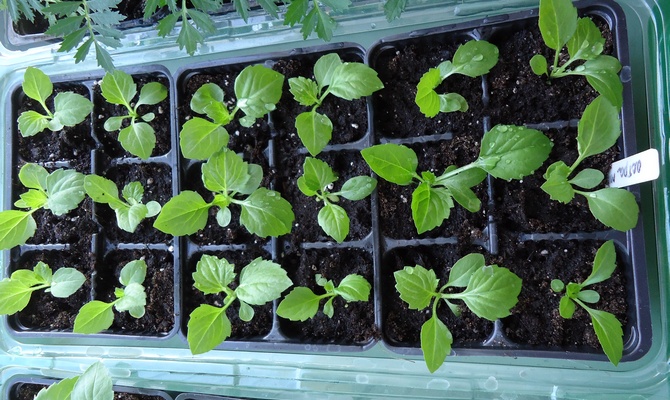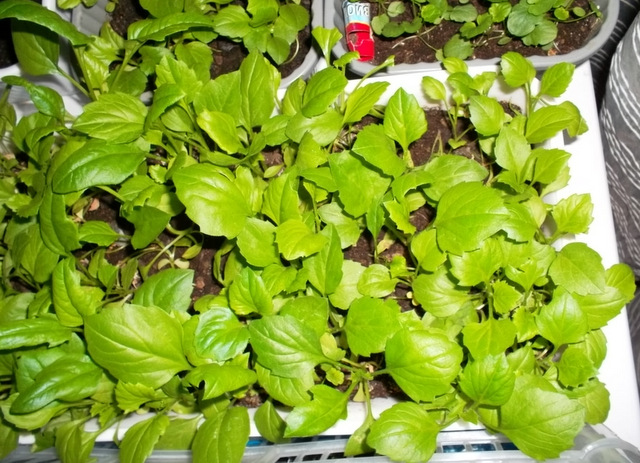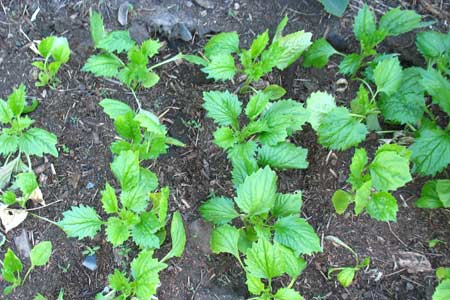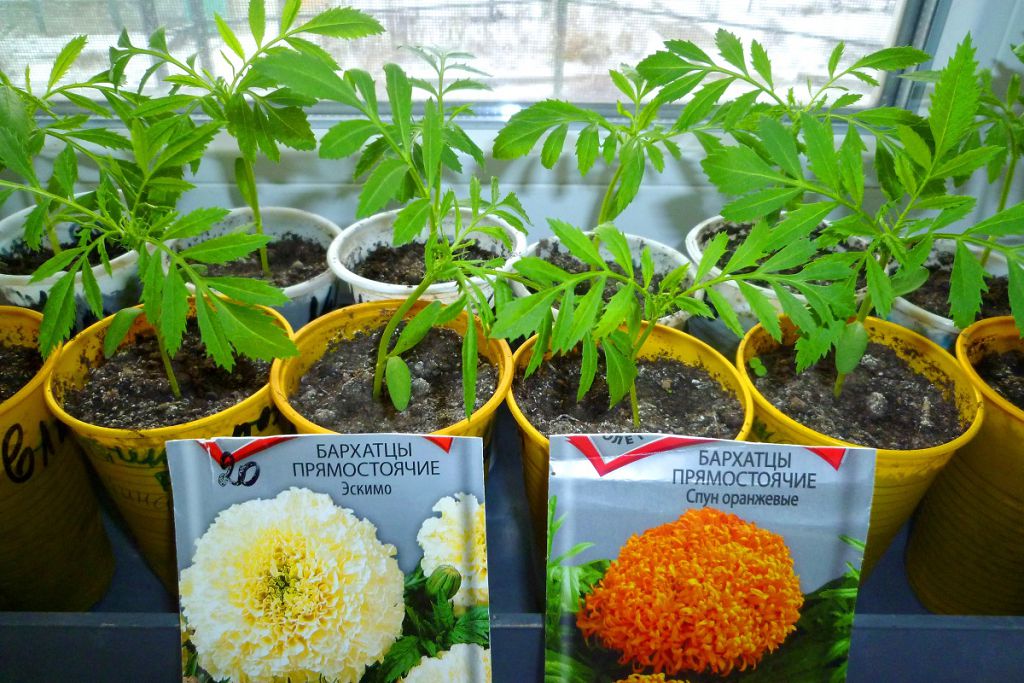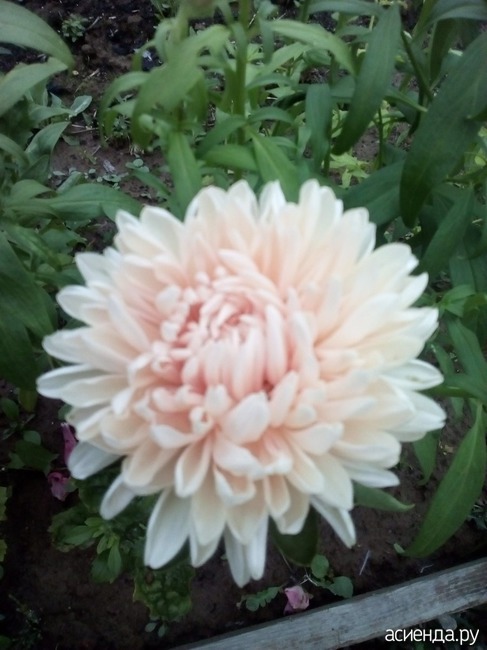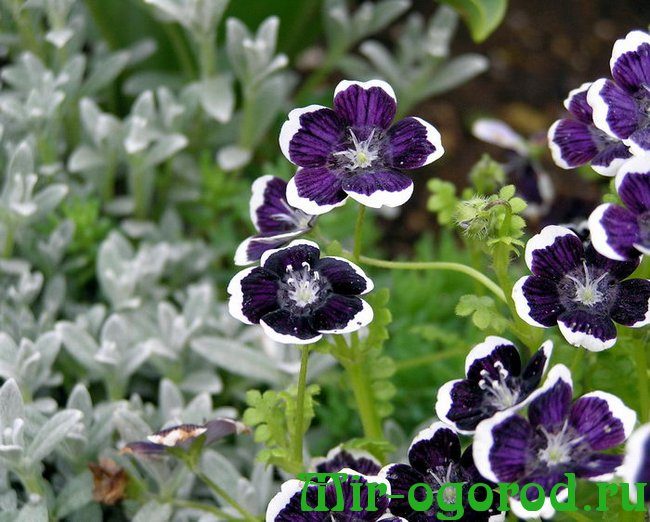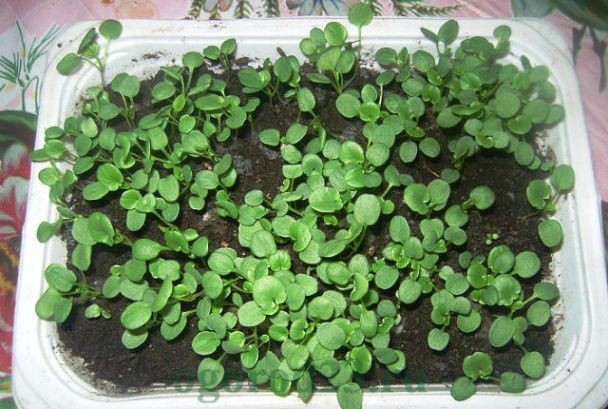Mistakes when growing seedlings
Garden aster does not require special care; even novice summer residents can grow a beautiful flower. Unpretentious annuals, with proper agricultural technology, quickly take root after transplantation, grow and delight with lush flowering.
What are the common mistakes florists can have:
- Use for sowing old seeds. It is recommended to sow asters of last year's collection (if the seeds were collected on their own) or two years of age. Already in the second year of storage, germination decreases by about 15-20%, so old seeds are not suitable for sowing.
- Seedlings are grown in common boxes or containers without picking into separate containers. First, these seedlings are more likely to get sick. Secondly, when planting, the roots of the plant intertwine with each other, break off, and deform. Such bushes take root slowly, get sick, often die. It is recommended to sow asters immediately in a separate bowl or to pick out the plantings in time.
- For cultivation, they take soil with a high nitrogen content. These nutritional mixes are not suitable for asters. The best soils: 2 parts of peat, 1 part of humus, 1 part of river coarse sand.
- Seeds are sown too tightly, which provokes the appearance of infections. The main danger is the black leg, which occurs when the soil is waterlogged, sudden changes in temperature conditions. To avoid this, the seedlings are watered moderately with warm water. For prophylaxis, several crystals of potassium permanganate are added to the water. The surface of the soil is sprinkled with calcined sand or ash.
For sowing, use seeds collected independently or purchased seed material. They take into account the expiration date of the seeds, purchase asters only from trusted suppliers. The packaging of some varieties of asters indicates the need for scarification (damage to the outer shell of the seeds to improve germination). To do this, use fine sandpaper, with which they slightly break through the skin of the seeds.
Soil preparation before sowing seeds
The soil for seedlings is used fresh, loosened, as fertilized with humus. In no case should you sow seeds in the ground in which plants have already grown earlier. Take 3 parts of turf, 2 - peat land, add 1 part of coarse sand and a couple of tablespoons of wood ash.
All parts are thoroughly mixed with each other and filled in containers intended for seedlings. Small wooden boxes are ideal. It is advisable to sprinkle the soil on top with a layer of sand 1 cm thick.
When there is no opportunity for self-preparation of the substrate, you can buy ready-made soil in the store and add wood ash and river sand to it so that it becomes more airy and light, and also allows water to pass through and breathes well.
Aster has a large enough seed, so there are practically no problems with sowing it. With proper preparation of the land, non-thickened plantings, well ventilated, plants very rarely get sick.
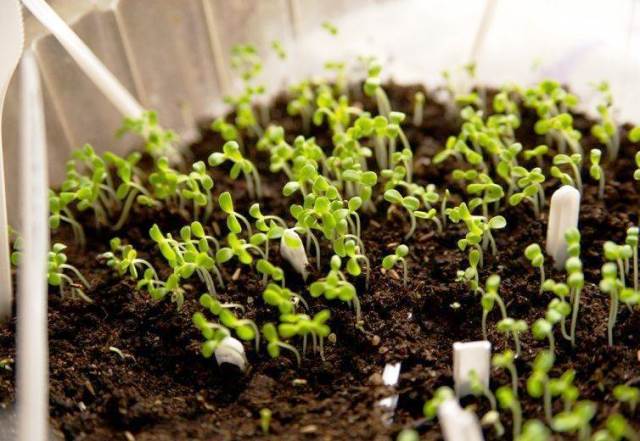
Ideal soil and planting time
Initially, you need to choose a place - it should be sunny, as these flowers love light and warmth. The soil is nutritious and drained. It's great if marigolds used to grow on this place.
Preparing the soil should be done in the fall. First you need to add manure and compost to it. It will take about 4 kg per square meter.
After that, the selected piece of land is dug up, and then digging is done in the spring. In this case, it is necessary to add potassium salt and superphosphate.
You can sow seeds at a time convenient for the gardener: either in the spring or in the fall. The only thing to consider is the climatic conditions.In the Moscow region, it is possible in both seasons, but in the Urals it is better to do this in the spring, so that severe frosts do not kill the plant. By the way, I always plant asters in the spring months too.
What month to sow?
Timing in the agronomist's business is of paramount importance. You hesitate a little and it's too late, you hurry up a little and the seedlings stretch out. Aster flowers are divided into types and varieties, including early maturity. We'll talk about this a little later. But always consider the flowering time.
When to plant asters for seedlings in 2020: in February, March, April or May? The answer to this question depends on the region of the future crop cultivation in the open field.
Here is the approximate planting time for asters for seedlings:
- Urals and Siberia - from early March to April 10;
- Far East - from March 15 to April 30;
- Moscow region and the Non-Chernozem region - from March 25 to April 25;
- Krasnodar Territory, Kuban, Volgograd - from February 10 to March 20.
Please note that the decision on which month to sow asters for seedlings also depends on personal capabilities. If there is a phytolamp of sufficient power and the optimal growing temperature can be ensured, then sow at least in February. The sooner the planting is carried out, the faster you will get flowering bushes. But the optimal period is still in March, when daylight hours begin to increase steadily, positive average daily temperatures are established.
In April, sowing asters for seedlings is recommended to be carried out in heated greenhouses for the subsequent sale of seedlings. This flower is in good demand among gardeners and gardeners. It is profitable to grow for sale both in the seedling stage and in the flowering stage. But we'll talk about this a little later.
Aster seedlings develop more slowly at home than in a greenhouse. This is due to inappropriate conditions for the growth of culture. And this circumstance should also be taken into account when calculating the sowing time.
In the table below you can see when to sow asters for seedlings in 2020 according to the lunar calendar:
| March | April | May | |
| sowing seedlings | 1, 2, 4-8, 26, 28, 31 | 1-4, 24, 25, 27-30 | 1-6, 24-31 |
| pick | 12-14, 16-19, 22-23 | 13-15, 18-20 | 1,2, 4-6, 25-29, 31 |
| feeding | 12-14, 16-19, 22-23 | 1, 2, 24, 25, 27, 28 | 4-6, 21,24 |
| landing in the ground | 27-30 | 25-29 |
You can see the full lunar calendar of gardeners on a special page.
Care for bright beauties
Asters, although they are not picky about care, still need to be monitored. The biggest nuisance that can happen is damage from parasites. To prevent this from happening, after a week and a half after planting, it is recommended to treat them with preparations containing copper.
Around this time, you can already give them a growth stimulant. Such a preparation will help the flowers develop faster. For example, it can be sodium humate.
Just do not forget that these stimulants are not top dressing, and it is still needed to form a favorable soil for growth.
Of course, watering is an integral part of grooming. It must be regular so that the plant develops well, grows quickly and rather begins to delight the eye with its flowers.
If everything necessary has been done for the soil in the fall, it is not necessary to add nutrients. But they never get in the way. Asters are recommended to be fed with mullein.
If this is not possible, you can always buy fertilizing from mineral fertilizers, as well as ammonium nitrate or urea. Complex options will also be harmless, because they already have all the essentials for a plant.
Care includes loosening the soil and removing weeds. Loosening is desirable every time after watering. This process will eliminate the need to fight the grass. If you follow all these simple recommendations correctly, then in the fall on the flower bed asters will certainly delight us with their multicolor.
Share the article with your friends, let them also have a beautiful multi-colored carpet made of these beautiful flowers at their dachas. And by subscribing to my blog, you will read all new useful articles on time.
It turns out that the annual asters familiar to us are a type of the Aster family.This flower is called Callistephus or Chinese Astra. Its stems are branched, green or red with a powerful fibrous root. Small alternate leaves, inflorescence - basket.
This flower has a special place in my front garden. My grandmother loved him very much and asters always bloomed with her by September. She sowed them just in the ground, and then planted them in the flower bed. They bloomed late, but still made them happy. The flowers were the simplest - pink and purple daisies. Now there are many varieties of this flower. They are varied in petal shape, color, plant height. Correspond to the name, because Astra is Latin for "star". Now I no longer sow aster directly into the ground, I want it to bloom early. To do this, you need to grow asters at home with seedlings. Or in greenhouses.
Aster seedlings care
It is not enough just to sow the seeds, you need to wait for the shoots and provide them with proper care.
Until the moment when shoots appear, containers with crops should be kept in a temperature regime of + 20 ... + 22 ºС.
After the emergence of seedlings, the container is transferred to the most lighted places, but the temperature should now be lower: during the day + 16 ... + 18 ° С, and at night + 12 ... + 15 ° С.
Lighting
Aster seedlings grow almost instantly. But for full-fledged development, they definitely need additional lighting. With a lack of lighting, the seedlings quickly lengthen and stretch. As a result, the seedlings fall over, break at the base.
For illumination, you can purchase special phyto lamps or use fluorescent lamps.
Humidity and watering
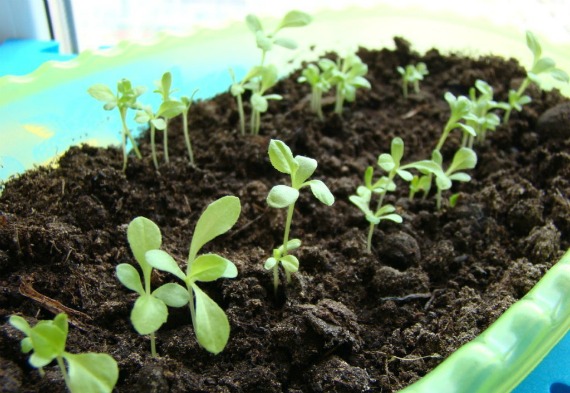 Watering aster seedlings should be done infrequently, only when the soil dries up. After watering, ventilation must be carried out to prevent the accumulation of moisture.
Watering aster seedlings should be done infrequently, only when the soil dries up. After watering, ventilation must be carried out to prevent the accumulation of moisture.
Around each sprout, the soil is carefully compacted so that there is no leaching during watering. Water the asters with warm water, starting from the edge, gradually moving to the center
2 days before planting and immediately before the procedure itself, the seedlings are watered very abundantly in order to preserve the roots and soil lump.
Top dressing
The first feeding of seedlings is done after diving. A week after transplanting, when the seedlings have already taken root, she is offered a complex mineral fertilizer. You can use any, but it is better to give preference to a special one for flower seedlings.
When preparing food for your seedlings, it is very important to remember that bird droppings and manure should not be offered to asters - they simply do not tolerate such feeding
Picking
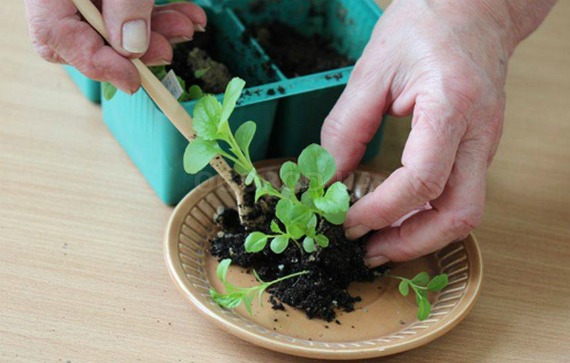 The procedure for diving aster seedlings is carried out when they grow 3 permanent leaves.
The procedure for diving aster seedlings is carried out when they grow 3 permanent leaves.
Flowers are transplanted into individual containers: plastic cups, edged bottles, peat pots.
In addition to soil, a universal fertilizer is added to each container.
From a container with seedlings, where the soil is preliminarily well moistened, one plant is removed along with a lump of earth
Then it is placed in its own separate container; add more soil there in the required amount.
It is very important to ensure that the lowest aster leaves are not lower than 1 centimeter from the soil level.
Water the plant carefully so that water does not fall on the foliage .. As for the illumination during this period, it is better to keep the seedlings from the direct rays of the sun for now.
Gauze can be attached to the glass, which gives good diffused light
As for the illumination during this period, it is better to keep the seedlings from the direct rays of the sun for now. Gauze can be attached to the glass, which gives a good diffused light.
Hardening
When the seedlings rooted after diving form the 4th leaf, the hardening procedure begins. The whole period takes 15-20 days. At this point, watering is reduced.
When hardening, aster seedlings are kept at a daytime temperature of + 10 ... + 12 ° С, and at night the thermometer should show + 8 ... + 10 ° С.
After hardening, the flowers take root faster in a new place, and their growth is accelerated. Even if frosts suddenly appear, the flowers can withstand a cold snap down to -4 ° C.
Aster diseases and pests

Fusarium
With improperly organized care of plants, the likelihood of diseases is high. The most common are the following:
- jaundice;
- powdery mildew;
- fusarium;
- rust.
When plants are damaged by Fusarium, their yellowing occurs, and then blackening of the leaves and stems. Coping with this disease is very difficult. The most effective way is to maintain a crop rotation.
Jaundice is considered a viral disease. It is spread by aphids and cicadas. In plants affected by jaundice, growth stops, the leaves turn pale, the ovary of buds stops. Recommended remedies for jaundice: Pyrethrum, Pirimor, Actellik.
When the disease spreads, it is recommended to burn the affected plants.
If the aster grows close to a coniferous tree, then rust infection can occur. You can cope with it if you water the asters with a 1% solution of Bordeaux liquid.
When affected by powdery mildew, a whitish bloom forms in plants. Most often, it appears with excessive soil moisture. Preparations for the treatment of plants affected by powdery mildew: Fuzandol and Topaz.
How to plant asters seeds for seedlings
Be sure to moisten the soil mixture before sowing seeds. The seeds, observing a certain distance, are laid out on the surface of wet sand, and they are slightly pressed into it, approximately to a depth of 0.5 centimeters.
Covering the boxes with foil to protect them from drying out, you need to put them in a bright place and wait for the shoots to appear, about 5-6 days. The main condition at this stage is the control of soil moisture in the nursery. Excess moisture will inevitably lead to the loss of seedlings. The air temperature in the room where the seedlings are located should be within 18-20 degrees.
When seedlings appear, the box with the seedlings must be moved closer to the light source so that there is enough light and coolness.
When the first two leaves appear, you can start picking seedlings. This falls on about the tenth day after germination. Further, the seedlings are kept in a room with a temperature of 13-15 degrees.
Other ways of sowing asters
There is such a method of growing asters as stratification - the use of temperature differences. A seed that has been in the refrigerator for a certain time will germinate faster.
You can spread the seeds over the soil in a box and cover everything with snow on top. The snow layer should be about 1 cm. It will gradually melt and pull the seeds into the ground. This method is nothing more than an imitation of the autumn sowing of asters in unprotected soil.
You can sow the plant over the soil surface. Place the container with the sown seeds in the refrigerator overnight, and transfer to a warm room for the day. Repeat the manipulation several times in a row, until the seeds germinate. When the seeds have hatched, spread out in pots, sprinkle with earth on top and water well.
At first glance, the work is quite painstaking and problematic, but then everything will be much easier. It is no longer necessary to carry out a pick and the percentage of germination with this method is much higher.
Asters are annual. Sowing, cultivation and care.
Of course, the main reasons for the popularity of the annual aster are beauty and variety. Unpretentiousness also plays an important role.
One-year-old aster is grown in a seedling and non-seedling way.
With the seedling method of growing, the seeds are sown in late March - early April in boxes or directly into the soil of the greenhouse - in the grooves, sprinkling the seeds with soil (0.5 cm), watered with a light pink solution of potassium permanganate and covered with paper or film. So that the seedlings do not get sick with the "black leg", the seeds are dusted with a fungicide before sowing, and the soil is spilled with a solution. After 3-5 days, when shoots appear, they remove the paper from the boxes and put them in a bright place so that the seedlings do not stretch out.
When the first true leaf appears, the seedlings dive at a distance of 5-7 cm from each other into pots, a box or into the greenhouse soil, since aster seedlings tolerate transplanting well even with an open root system. If the hypocotyledonous knee of the seedlings is very elongated, then when picking, they can be deepened almost to the cotyledonous leaves.
A week after the pick, they begin to feed the seedlings (once every seven days). It is planted in open ground already from mid-May, since the plant is cold-resistant - it can tolerate frosts down to -3-4 ° C.
The place of these plants must be chosen light, even, so that the water does not stagnate during irrigation and in rainy weather. It is desirable that asters and other crops suffering from fusarium (potatoes, tomatoes, levkoi) are not grown here for 3-4 years before.
Humus or compost (but not fresh manure, it contributes to the defeat of plants by fusarium), complex or phosphorus-potassium fertilizers (40-60 g of nitrophoska or 60-80 g of superphosphate and 30-40 g of potassium fertilizers) and wood ash (100 -150 g) per square meter of area. But if the soil is well cultivated, rich in nutrients, then you can do without fertilizers. Before planting, seedlings are watered abundantly, especially if they were grown without pots.
It is better to plant plants in the evening at a distance of 20-30 cm (depending on the splendor and height of the variety). 7-10 days after planting asters, you can feed with complex fertilizer and repeat feeding after 3-4 weeks. In dry weather, the plants are watered moderately.
With the seedless method, seeds are sown into the ground in early spring, as soon as the soil is ready. Seeds are sown in shallow grooves, covered with a layer of soil 0.5-0.8 cm, well watered and, in dry weather, slightly mulched or covered with covering material until shoots appear.
Well-developed seedlings in the phase of 2-3 true leaves are thinned out to a distance of 10-15 cm. It is better not to pull out extra seedlings, but carefully dig up and transplant to another place.
Aster seeds are sown not only in spring, but also before winter (on frozen soil, in previously prepared grooves). In this case, plants are almost three times less likely to be damaged by fusarium. In the spring, seedlings are thinned out.
Asters begin to bloom, depending on the variety and growing method, from late June to mid-August. Flowering continues until frost.
Many varieties of asters set seeds well in the conditions of central Russia. To preserve the variety you like, you need to wait until the petals on the inflorescence fade, and its center darkens and a white fluff begins to appear on it. Such inflorescences are plucked, put in paper bags and dried in a warm, dry place. On the package, you must write the name of the variety, or at least the color and shape of the inflorescence and the year of collection of seeds.
The only negative is that the seeds lose their germination rather quickly during storage: after 1-2 years, it decreases from 90-95% to 40-50.
MK for sowing aster seeds for seedlings
... I first soak the seeds in wet wipes. This way you can see the germination of seeds better.

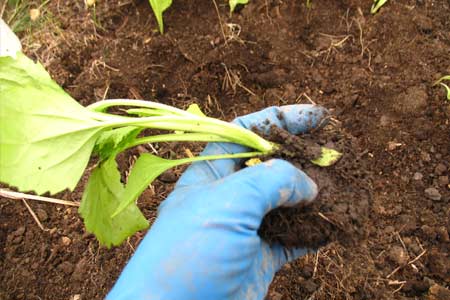
Landing in open ground
Young bushes are planted in the garden, starting in mid-May. The plant is quite unpretentious and is able to cope well with frosts down to –3… –4 degrees.
Choose a location that will not stagnate in rainy weather. Moreover, it is better to choose a site where crops susceptible to fusarium have not been grown before.
Right before planting, the seedlings are well watered, and compost, phosphorus-potassium and complex fertilizers, as well as about 100-150 g of wood ash per 1 sq.... m. Planting of asters on seedlings is carried out at a distance of about 30-40 cm, so that lush bushes do not interfere with each other's development.
Marigold
Consider separately sowing asters for seedlings of this species. What are the distinctive features of this plant? Its seeds are much larger, and the seedlings grow faster.So sprinkle these "fellows" with earth when sowing a whole 1 cm. Marigolds are very fond of heat, so it is better to keep them in a room with a temperature of + 23 ... + 27 degrees. This seedling is much more resistant to the "black leg", so when watering you can not skimp.
Annual dahlias
The seeds are very similar in size to marigolds. Due to their large size, they must be sown at a distance of approximately 6 × 6 cm.
Beauty nasturtium
When to sow aster seedlings? You cannot rush with this plant, and even more so it is contraindicated to sow seeds directly into the garden, since nasturtium does not tolerate frosts very well.
Also, it is for this plant that it is better to carry out pre-sowing treatment. When the seeds germinate, they are laid out in a sowing hole up to 1.5–2 cm deep. Of course, you can plant non-germinated seeds, but then put them 2-3 in each hole.
It is best to grow nasturtium in peat cups, because these bushes do not tolerate planting quite well.
Petunia
But with this bush you will have to retire. An unusually capricious plant. Seeds are sown at the end of February in moist soil. Since the diameter of the seeds is small, they are not buried in the ground, but left on the surface, only lightly sprinkled on top.
After planting, petunias are covered with a film so that the optimum temperature for germination is maintained at about +20 degrees. In addition, it is necessary to maintain an average level of moisture in the upper layer of the earth, otherwise mold will ruin all young seedlings. It's good at least that with petunias you don't have to worry about how to plant asters for seedlings, because all seedlings are initially in the garden.
After 7-12 days, when the plants already have several leaves, you need to start spraying them with a weak solution of potassium permanganate. At first, the seedlings are very sensitive and grow slowly.
.
It turns out that the annual asters familiar to us are a type of the Aster family. This flower is called Callistephus or Chinese Astra. Its stems are branched, green or red with a powerful fibrous root. Small alternate leaves, inflorescence - basket.
This flower has a special place in my front garden. My grandmother loved him very much and asters always bloomed with her by September. She sowed them just in the ground, and then planted them in the flower bed. They bloomed late, but still made them happy. The flowers were the simplest - pink and purple daisies. Now there are many varieties of this flower. They are varied in petal shape, color, plant height. Correspond to the name, because Astra is Latin for "star". Now I no longer sow aster directly into the ground, I want it to bloom early. To do this, you need to grow asters at home with seedlings. Or in greenhouses.
Asters - growing from seeds
To obtain healthy seedlings, you should not only properly plant, but also take care of the seedlings. There are some secrets of growing asters at home:
A suitable air temperature should not be lower than 15 ° С, but the optimal value is 18-20 ° С. Containers should be exposed to light, but not in direct sunlight.
To plant these wonderful flowers, use a suitable soil, which you can buy in the store or do it yourself: mix two parts of peat and part of ordinary earth. Add 25 g of ash and sift everything through a sieve. After that, hold the mixture over steam for half an hour.
When growing asters, it must be borne in mind that the crop is drought-resistant, so watering should not be frequent.
Irrigation is especially important during bud setting in order to obtain abundant flowering.
Enemies of asters are various diseases, therefore, for prevention, it is recommended to spray using solutions that contain potassium, magnesium, zinc, copper and boric acid.
Term of germination of aster seeds
It is important to take into account that seed material loses its germination in a short period of time, and nothing can be planted a year after collection. If the seeds are fresh, they will appear in 5-10 days.
When the seedlings appeared after two weeks, it means that the seeds are old and it is better to sow a new batch. There is a simple instruction on how to test aster seeds for germination:
- Soak cotton pads or paper napkins in water and place them on a saucer. Place the seeds on top. You do not need to use all the planting material, but just take 10 pieces.
- Cover the saucer with foil and place it in a place where the temperature does not drop below 20 ° C and does not rise above 23 ° C.
- Keep an eye on the seeds constantly so you don't miss the start of growth. If the wipes are dry, then moisten them additionally.
- The earlier the sprouts appear, the more vital energy the seeds have. To determine the percentage of germination, you need to estimate the number of germinated seeds. An acceptable level of 60% is that 6 out of 10 seeds should germinate.
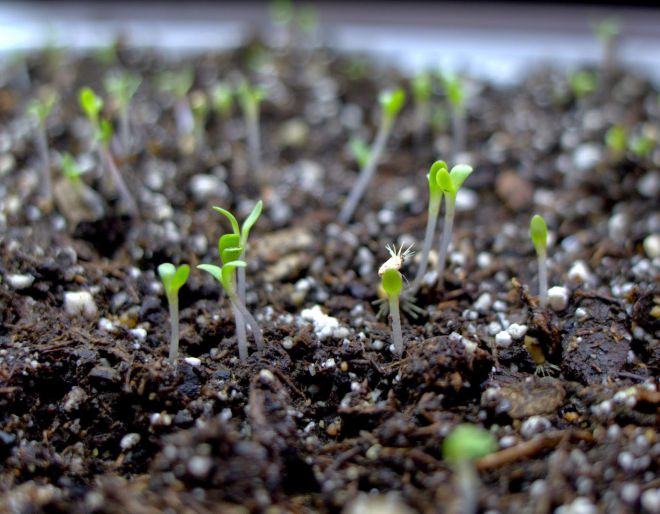
When to sow asters for seedlings?
The flowering period depends on the variety and type of asters, for example, buds appear on annual crops after about 3-4 months. after planting, but perennials will please with flowering only for the next season. Thinking over the timing of sowing aster seeds for seedlings, keep in mind that early varieties bloom 100 days after planting, so plant them from March, and later ones - after 4 months. and sow them in May.
Preparing aster seeds for sowing seedlings
To speed up the process of growing bushes, you can prepare the seeds before how to plant them, and there are ways to do this:
- Where to sow asters, growing from seeds, when to plant, they figured out, and you need to figure out the method of germination. Soak cheesecloth in a weak solution of potassium permanganate and wrap the seeds in it. Leave it on for a week without forgetting to moisturize. After that, squeeze the cheesecloth and put it in a bag, placing it in a warm place. After a few days, the seeds should hatch and you can plant them.
- If you are interested in whether it is necessary to soak aster seeds for seedlings before planting them, then you should know about the second germination option, which takes little time. 10-12 hours before planting, you need to send the seeds to a solution of potassium permanganate. After that, rinse them and you can plant.
When and how to plant asters?
In general, aster seedlings are ready for landing in a permanent place by mid-May. There is no need to rush to transplant, since the underdeveloped seedlings still have too weak a root system and engraftment is painful. Aster seedlings ready for planting on a garden bed should have well-developed roots and a height of the aboveground part of about 10 cm. Such plants easily tolerate transplanting and quickly start growing.
I plant seedlings in furrows filled with water. The distance between furrows is about 0.5 meters, between plants in rows 20-25 cm. Of course, these distances are given for industrial plantings. Asters, planted along the paths in the summer cottage or personal plot, look very beautiful. I especially like planting low-growing (dwarf) asters along the paths.
7-10 days after planting, it is advisable to treat aster seedlings with medicinal preparations, since aster flowers, like many cultivated plants, are susceptible to diseases (leaf curling is often observed). On light sandy soils, constant watering is required. Only then will the flowers grow healthy and beautiful.
Caring for asters
Caring for asters is the easiest thing to do when compared to caring for other flowers in the garden. If a sufficient amount of nutrients have been introduced into the soil in the fall on the site, then all care for asters during the growing season will consist in timely watering and weeding beds.
If you manage to add top dressing at least once or twice, it will be generally wonderful, and in this case the asters will delight you with large flowers on powerful stems. Particularly large color on my site is given by the aster "White Iceberg". People who see her for the first time mistake her for a large-flowered chrysanthemum. However, it is visible in the picture.
The best option for feeding asters is a fresh mullein, diluted in a ratio of 1:10.In extreme cases, you can use mineral fertilizers - during the period of growth and development of the plant, you can feed it with urea or ammonium nitrate. Better yet, apply a complex fertilizer, for example, natroammofosku.
Also, at the very beginning of growth - 10-15 days after planting - asters can be fed with sodium humate or other growth stimulant. It should be remembered that growth stimulants do not replace fertilizers and it makes sense to use them only when the soil is well fertilized.
So, caring for asters includes timely watering, loosening the soil, weeding and feeding. Watering is desirable plentiful, after watering - loosening. In this case, you have to water less often and there is no need to fight weeds. When loosening the soil after good watering is ignored, a hard crust forms on the soil surface. This impairs the air permeability of the soil, promotes its quickest drying and creates favorable conditions for the germination of weed seeds.
How to get your aster seeds
If you want to get your seeds, leave the aster flower you like (the largest and healthiest one) on your site for full ripening. It is advisable to leave more than one flower, as moth larvae strongly affect them. The flower should stand on the root until the seeds are fully ripe.
If the flower bloomed late and the seeds do not have time to ripen before the onset of frost, then the plant can be transplanted with a root and a lump of earth into a bucket or flower pot (in any suitable dish) and put into a room to ripen. In ripe seeds, the fluff should be easily separated and they themselves spill out from the bud from a light touch with your fingers.
In order to prevent flower moth larvae from infesting flowers left to obtain seeds, a simple method of protection is practiced. The flower (bud) you like should be wrapped with gauze folded in two layers at the very beginning of flowering. Such a primitive defense will not allow the moth to sit on the aster bud and leave its larvae there.
Was the article helpful to you? Share the link to the site with your friends and acquaintances - click on one (or several) of the social media buttons
.
- Asters sowing for seedlings
- Astra sowing for seedlings
- Asters for seedlings
- Astra planting seedlings in the ground
- How to sow asters for seedlings
- Picking up seedlings of asters
- Asters planting seedlings
- When to plant aster seedlings in the ground
- When to plant aster seedlings in open ground
- Aster for seedlings
- Seedling of flowers aster
- Aster seeds for seedlings
- Sow asters for seedlings
- How to plant aster seedlings
- When aster seedlings dive
- Seedling asters
Cultivation and features of places
So, we already have quality seeds. Growing aster seedlings should be started in the spring. We begin to sow seeds in the soil when the sun is already warming well outside the window - in the last decade of March or early April.
First, decide on a place. You can use regular flower pots, which are more spacious. Drawers will also work. And some artisan flower growers build miniature greenhouses on the windowsills especially for timid seedlings.
If you have a large greenhouse at your dacha, then you can arrange a nursery garden for future asters there too. In principle, the place of planting seeds for seedlings does not particularly affect the germination rates. At the preparatory stage, I advise you to treat the seed material with fungicide powder, and water the soil with a solution.
This is necessary for the prevention of a disease like a black leg, which can very much harm the plant. Do not be lazy at this stage to take care of healthy seedlings in order to subsequently get strong "stars" in the autumn flower bed.
Seeds are sown into the ground to a depth of half a centimeter. It is recommended to water them with manganese solution immediately after sowing. In order not to blur the grooves, I use a strainer. I just gradually pour water with potassium permanganate through it, as if sifting. Then I cover the pots with paper, and if you are building a mini-greenhouse, then use plastic.After about a week, shoots should appear.
We move the seedlings to a place in the apartment well lit by sunlight, and remove the film from the greenhouse. Then we are waiting for the appearance of the first leaf. This significant event suggests that it is time to start a dive. As a child, I always helped my grandmother in this matter.
We carefully transplanted small sprouts. At the same time, you feel with your heart how life is being born
And even if these are just plants, they also strive for the sun and fight for their existence.
The day flashes by with unfamiliar faces.
In the twilight, the last lightning will break out
Blue asters, burgundy, white ...
Asters tolerate picking well. Each individual plant must be planted from its "relatives" at a distance of more than 5 cm. Do you want a proprietary secret? I use egg trays to give the seedlings the freedom they want. It is convenient to transplant flowers from these cells into open ground.
The first feeding is carried out a week after the dissection. Further, this procedure should become regular. When planting asters for seedlings, a complex fertilizer is used for these purposes, which can be purchased at the store.
Plan to relocate sprouts to open areas for May. During this period, frosts are still possible, but you should not worry - the seedlings will withstand a cold snap to -4 degrees. Better to choose a warm May evening for planting seedlings in the ground. Maintain a distance of 25-30 cm between plants. In the early days, you can cover the asters with foil so that they can more easily survive the change of residence.
If, when diving, you notice that the seedlings are very elongated, plant them in the soil deeper. You can even almost to the level of a leaf.
Aster seedlings need moderate watering. Remember: it is better to give the seedlings less water. Excessive moisture can be harmful.
The watering procedure is recommended to be carried out in the first half of the day, so that the soil dries out a little before dusk.
For aster seedlings, temperature differences are useful. During the day, ensure the temperature regime is within 20-25 degrees, and at night a cold snap should come up to +12.
I strongly advise against planting aster seedlings in the beds that were occupied with tomatoes or potatoes last year. The principle of beneficial symbiosis does not apply here. The fact is that tomatoes and nightshades often suffer from fusarium. Dangerous pathogens of this plant disease feel great and multiply in the soil. And cute humble asters can adopt this disease.
Motley autumn lives with carnivals,
Extending summer into rainy weeks,
Pampering with bright days and colors -
Purple, yellow, red asters ...
.

